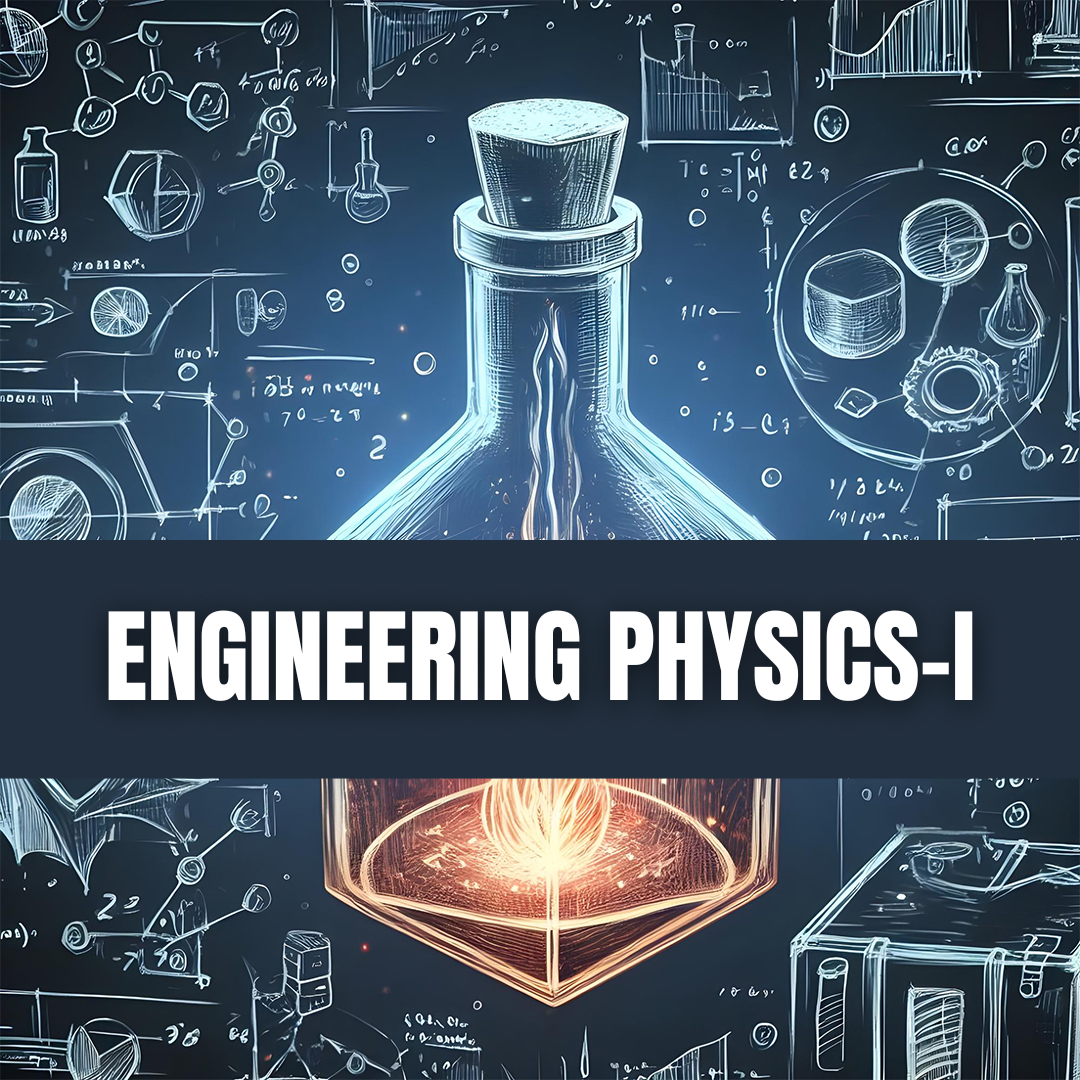Engineering Physics-I
11.98$
About the course
Engineering Physics is a science that deals with the Study of Matter and its Motion. The subject covers mainly the Concept of Relativity, Diffraction, Polarization, Generation and Propagation of Electromagnetic Waves, Properties of Magnetic Materials, Lasers, Characteristics of Fiber Optics, X-Rays etc.
What will you learn?
The complete online syllabus of this course comprises 10 Learning Modules | 161 Topics of Learning | 7.4 Hours of Learning | 48 Assessments
Module
- Generation and Propagation of EM Waves
- Types of Magnetic Materials & their Properties
- Basics of Superconductors
- Basics of Lasers and their Types
- Fiber Optics and its Characteristics
- Concepts of Relativity
- Synthesis of Nanomaterials and their Properties
- Study of Atoms Arrangement in a Crystal
- X-Rays Types and Its Characteristics
- Representation of Particle as Waves
Topics of Learning
- Vector
- Gradient of a Scalar Field
- Divergence of a Vector Field
- Curl of a Vector Field
- Electric Field
- Electric Flux
- Gauss’s Law
- Electric Potential
- Displacement Current
- Equation of Continuity
- Introduction to Dielectric Materials
- Dielectric Materials and their Types
- Permittivity and Dielectric Constant
- Polarization and Polarizability
- Electrical Susceptibility
- Electronic Polarization
- Ionic Polarization
- Orientation Polarization
- Space Charge Polarization
- Dielectric Breakdown
- Ampere’s Circuital Law
- Faraday’s Law of Electromagnetic Induction
- Maxwell’s Equations
- Maxwell’s First Equations
- Maxwell’s Second Equation
- Maxwell’s Third Equation
- Maxwell’s Fourth Equation
- Characteristic of EM Waves
- Wave Propagation in Free Space
- Poynting Theorem
- Fundamental Terms related to Magnetism
- Permeabilty and Magnetic Field Intensity
- Concept of Magnetic Moment
- Atomic Origin of Magnetism
- Classification of Magnetic Material
- Diamagnetic Materials
- Paramagnetic Materials
- Ferromagnetic Materials
- Magnetic Domain
- Anti-Ferromagnetic Materials
- Ferrimagnetic Materials
- Magnetostriction
- Ultrasonics
- Magnetostriction Method
- Superconductivity
- Critical Temperature
- Thermodynamics of Superconductors
- Meissner Effect
- Type I Superconductors
- Type II Superconductors
- London Penetration Depth
- London Equation
- BCS Theory
- Application of Superconductors
- Lasers
- Stimulated Absorption
- Spontaneous Emission
- Stimulated Emission
- Einstein’s Coefficient and Relations
- Optical Pumping for Population Inversion
- Coherent Source
- Components of laser
- Modes of Optical Resonator
- level laser systems
- Ruby lAsers
- He-ne Lasers
- CO2 laser
- semiconductor laser
- Principle of Holography
- Recording of Hologram
- Re construction of image from hologram
- Optical Fiber
- Advantages of Cladding
- Critical Angle
- Total Internal Reflection
- Acceptance Angel & Cone
- Numerical Aperture
- Types of Optical Fibres
- Signal Loss in Optical Fiber
- Modal classification of fibres
- Fibre Optics Communication System
- Inertial & Non Inertial Frames
- Galilean Transformations
- Concept of Ether
- Einstein’s Theory of Relativity
- Michelson-Morley Experiment
- Lorentz Transformation Equations
- Length Contraction
- Problem on Length Contraction
- Time Dilation
- Variation of Mass with velocity
- Mass Energy Equivalence
- Addition of Velocities
- Nanotechnology and Nanomaterials
- Nanoscale
- Basic Element of Nanomaterials
- Classification of Nanomaterials
- Syntehsis of Nanomaterials
- Ball Milling
- What is Carbon Nanotube?
- Development of Carbon Nanotubes: Arc Method
- Development of Carbon Nanotubes: Laser Ablation Method
- Properties of Carbon Nanotubes
- Properties of nanomaterials
- application of nanomaterials
- Space Lattice
- Translation Vector
- Unit Cell
- Crystal Systems
- Bravais Lattices
- Number of Atoms Per Unit Cell
- Coordination Number
- Atomic Radius
- Packing Density
- Miller Indices
- What is X-Rays?
- Production of X-Rays
- Bremsstrahlung X-rays
- Characteristic X-rays
- Diffraction of X-Rays
- Bragg’s Law
- Bragg’s Spectrometer
- Crystallography
- Failure of Classical Mechanics
- Quantum Mechanics
- Particle and Wave
- Wave Particle Duality of Radiations
- De-Broglie’s Concept of Matter Waves
- De-Broglie Wavelength
- Properties of Matter Waves
- Phase and Group Velocity
- Particle Velocity
- Heisenberg Uncertainty Principle
- Wave Function and its significance
- Properties of Wave Function
- Schrodinger Time-Dependent Wave Equation
- Schrodinger Time Independent Wave Equation
- Schrodinger’s Wave Equation-Particle in 1-D Box
- Eigen Values for a Free Particle
For a quick review, please watch our videos here 




